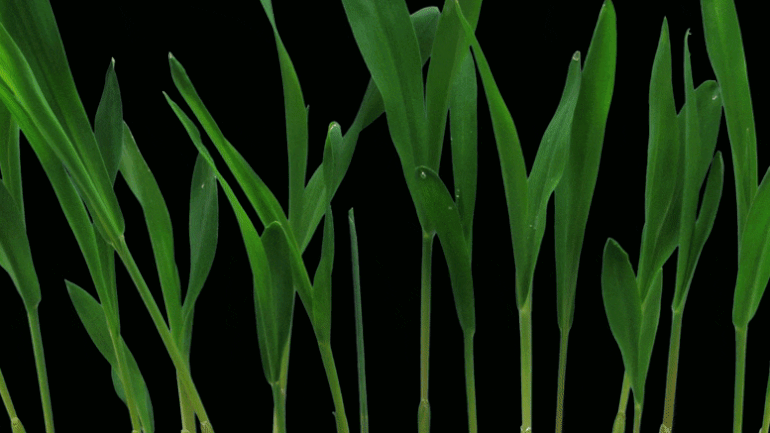Grass can be frequently trimmed and consumed multiple times by herbivores such as buffalo, cattle, and sheep, yet it continues to regrow.
The regenerative power of grass has long been a mystery, believed to lie in the unique shape of its leaves. However, how this shape is formed and its specific impacts remain unanswered by science.

Grass can regrow multiple times even after being cut or heavily grazed by herbivores.
Recently, a research team from the John Innes Centre, in collaboration with Cornell University, the University of California, Berkeley, and the University of Edinburgh, has shed light on the mystery of grass leaf formation using advanced genetic techniques and the latest computational models.
“The regeneration of grass leaves is a complex puzzle,” said Professor Enrico Coen, one of the study’s authors. “By constructing and testing various models of evolution and development, we believe that current theories about grass may no longer be accurate. This also challenges a concept that has been established since the 19th century.”
According to the study, monocotyledonous plants, including the grass family, are characterized by structures where leaves surround the stem from the base, with parallel veins running throughout.
This structure is markedly different from that of flowering plants, such as legumes, shrubs, and many other common crops, which have leaves separated from the stem by petioles.
In contrast, grass has a tubular structure at the base of the leaf, known as the sheath. This protective layer allows the plant to grow taller while keeping its shoot close to the ground, safeguarding it from the blades of lawnmowers or the teeth of herbivores.
“To uproot grass, one must pull it out from the root” – a famous proverb of Chinese origin, also reflects this truth, as the vital part of grass that sustains its life is located near the base, often hidden beneath the soil, to protect it from harmful impacts.
Research on grass also indicates that simple growth laws, based on a common gene development model, can produce significant diversity in leaf shapes found in nature.


















































